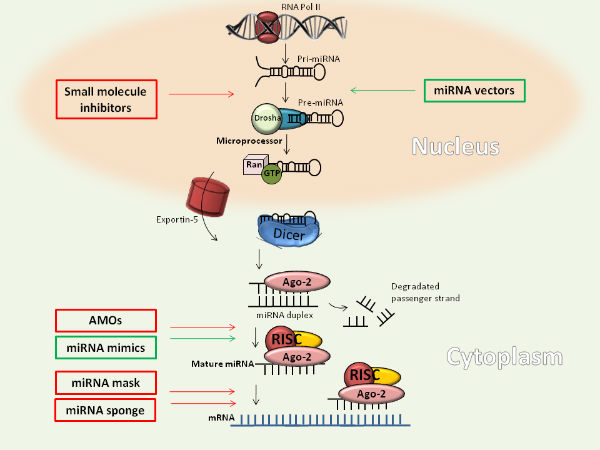
Author information
Diana Gulei1, Ioana Berindan-Neagoe1,2,3, George A Calin4,5*
Download
1MEDFUTURE – Research Center for Advanced Medicine, “Iuliu Hatieganu” University of Medicine and Pharmacy, Cluj-Napoca, Romania
2Research Center for Functional Genomics, Biomedicine and Translational Medicine, “Iuliu Hatieganu” University of Medicine and Pharmacy, Cluj-Napoca, Romania
3Department of Functional Genomics and Experimental Pathology, The Oncological Institute “Prof. Dr. Ion Chiricuta”, Cluj-Napoca, Romania
4Department of Experimental Therapeutics, The University of Texas MD Anderson Cancer Center, Houston, Texas, USA
5Center for RNA Interference and Non-coding RNAs, The University of Texas MD Anderson Cancer Center, Houston, Texas, USA
2Research Center for Functional Genomics, Biomedicine and Translational Medicine, “Iuliu Hatieganu” University of Medicine and Pharmacy, Cluj-Napoca, Romania
3Department of Functional Genomics and Experimental Pathology, The Oncological Institute “Prof. Dr. Ion Chiricuta”, Cluj-Napoca, Romania
4Department of Experimental Therapeutics, The University of Texas MD Anderson Cancer Center, Houston, Texas, USA
5Center for RNA Interference and Non-coding RNAs, The University of Texas MD Anderson Cancer Center, Houston, Texas, USA
Abstract
MicroRNAs have become central players in the process of finding and implementing novel therapeutic strategies for the overcoming of the cancer associated heterogeneous effects. Their ability to target multiple coding genes in order to influence and regulate entire signaling networks and also their differential expression between healthy and malignant cell is nowadays tackled in preclinical studies that enroll models of human cancers. The main approaches consist in the inhibition of oncogenic miRNAs that are usually overexpressed in transformed cells and also the re-expression of the tumor suppressor ones that are characterized by a downregulated expression pattern. No matter the strategy, it is vital to choose wisely the targeted sequence in order to achieve global cancer inhibitory effects, where key players that direct phenotypically transformations sustain numerous miRNA signatures. As important is also the therapeutic strategy that needs to be validated in terms of both efficiency and safety in order to avoid installation of secondary pathological conditions.
(Received 8 April, 2017; accepted 8 May, 2017)
Keywords
miRNA, therapy, cancer, inhibitors, mimics, delivery









